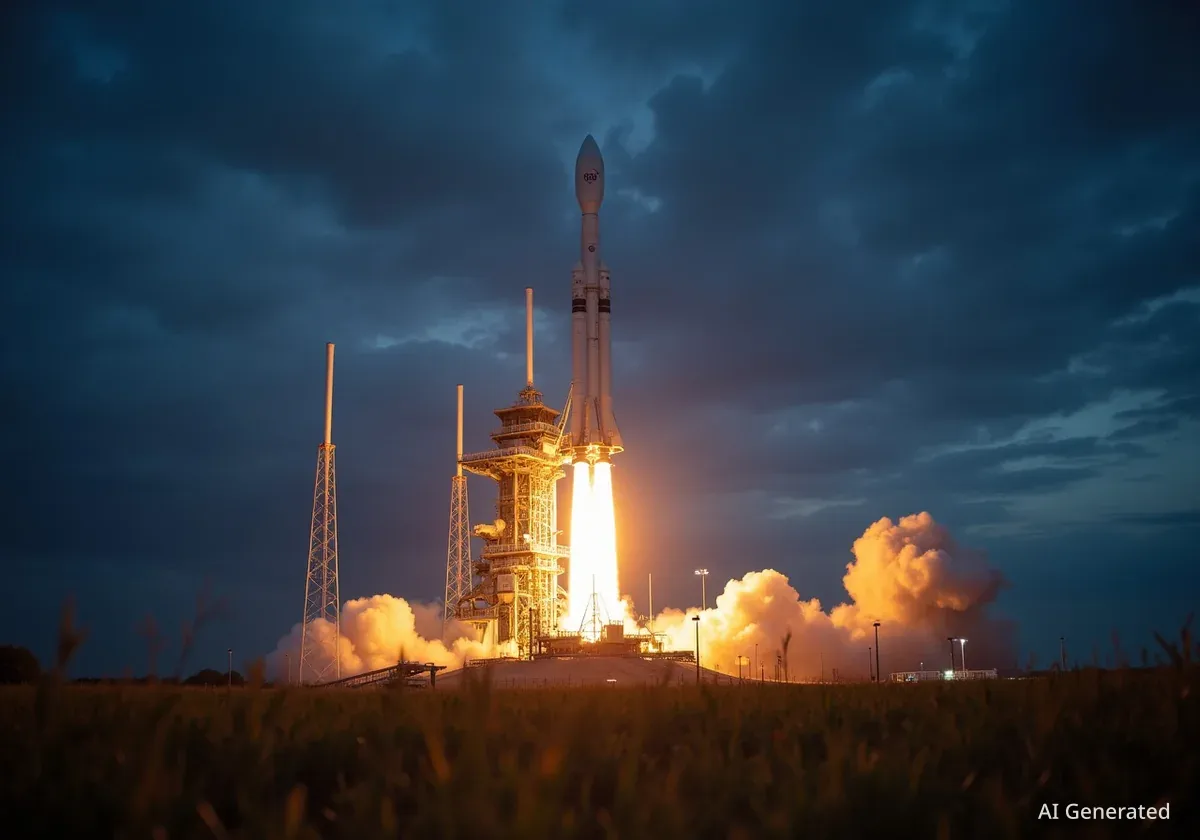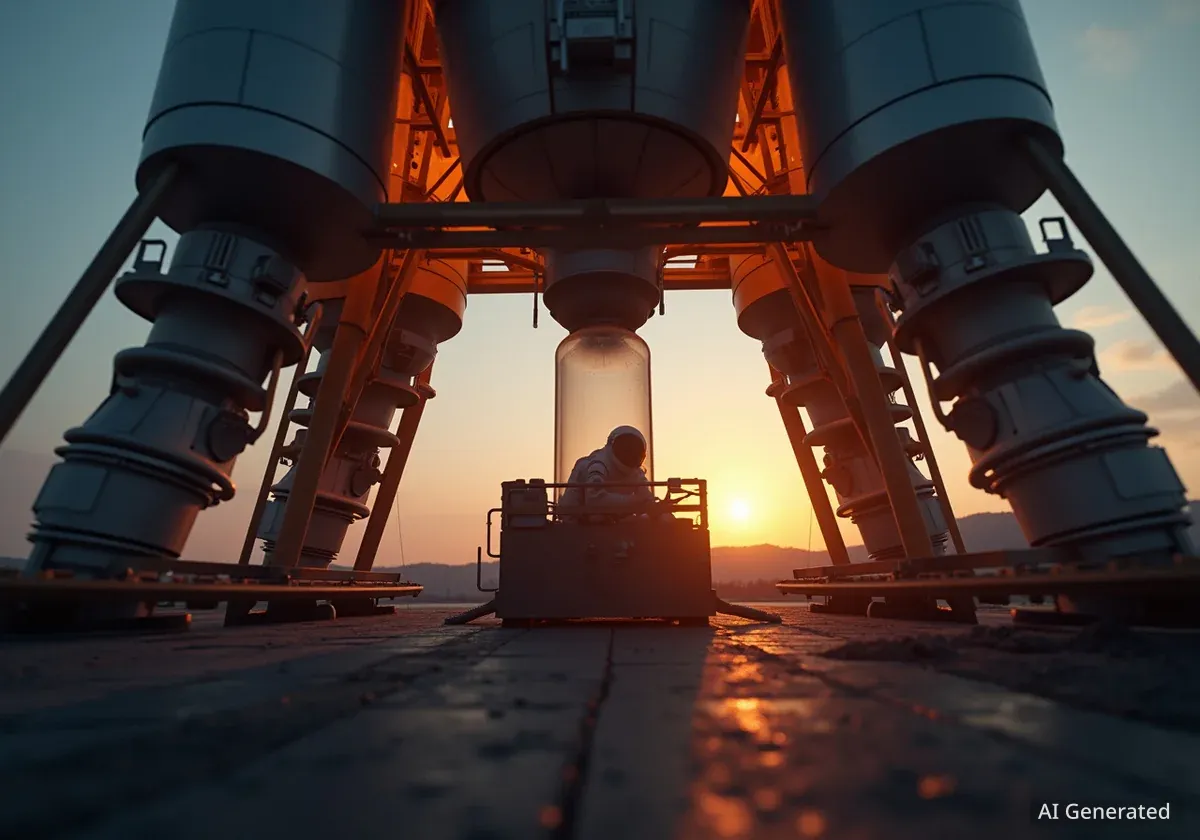SpaceX is preparing for another mission to expand its Starlink satellite internet constellation with a launch scheduled for this weekend from Florida. A Falcon 9 rocket is slated to lift off from Cape Canaveral Space Force Station, carrying a new batch of satellites into low-Earth orbit.
Key Takeaways
- Mission: A SpaceX Falcon 9 rocket will launch 28 Starlink satellites.
- Location: The launch will take place from Cape Canaveral Space Force Station in Florida.
- Date and Time: The launch is scheduled for Sunday, September 21, with a four-hour window opening at 5:20 a.m. EDT.
- Reusable Booster: The first-stage booster assigned to this mission will be making its 11th flight, highlighting SpaceX's focus on reusability.
Launch Details and Timeline
SpaceX has officially confirmed its next launch from Florida’s Space Coast. The mission, designated for the Starlink network, is set to proceed on Sunday, September 21. According to the company's schedule, a four-hour launch window will open at 5:20 a.m. Eastern Daylight Time.
The Falcon 9 rocket will carry a payload of 28 Starlink satellites. These satellites will join the thousands already in orbit, working to provide high-speed, low-latency internet service to users around the globe. The launch will take place from one of the company's pads at the Cape Canaveral Space Force Station.
Weather conditions along the Space Coast will be a key factor in determining if the launch proceeds as scheduled. Backup launch opportunities are typically available if the primary window is missed due to weather or technical issues.
The Importance of Launch Windows
Launch windows are precise periods during which a rocket must lift off to reach its intended orbit correctly. For missions like Starlink, the timing is calculated to place the satellites into a specific orbital plane, ensuring they are correctly spaced within the larger constellation.
A Veteran Falcon 9 Booster
This mission will utilize a flight-proven Falcon 9 first-stage booster. SpaceX has announced that this will be the 11th flight for this particular vehicle, a testament to the company's reusable rocket technology. The ability to reuse the most expensive part of the rocket has significantly reduced the cost of accessing space.
An Extensive Flight History
The booster has a diverse and impressive launch history, having supported a variety of missions for different customers. Its previous flights demonstrate its reliability and versatility.
- Crew-9: A NASA Commercial Crew mission carrying astronauts to the International Space Station.
- RRT-1: A dedicated rideshare mission.
- Firefly Blue Ghost Mission 1: A lunar lander mission for NASA's Commercial Lunar Payload Services (CLPS) program.
- Fram2: A private astronaut mission.
- SXM-10: A communications satellite for SiriusXM.
- MTG-S1: A meteorological satellite.
- Four Previous Starlink Missions: This booster has already contributed significantly to building out the satellite constellation.
After stage separation, the first-stage booster will attempt to land on one of SpaceX's autonomous droneships stationed in the Atlantic Ocean. A successful recovery will allow the booster to be refurbished and prepared for a future mission.
Fact About Reusability
SpaceX's Falcon 9 is the world's first orbital-class reusable rocket. Reusing boosters allows the company to maintain a high launch cadence, which is essential for deploying the large-scale Starlink constellation and serving other commercial and government customers.
Expanding the Starlink Network
The primary goal of this launch is to continue the deployment of SpaceX's Starlink satellite internet service. The network is designed to deliver broadband internet to underserved and rural areas globally, as well as provide connectivity for aviation and maritime industries.
With each launch, SpaceX adds more satellites to its mega-constellation, which currently consists of several thousand active units in low-Earth orbit. The addition of these 28 satellites will increase the network's capacity and improve service coverage and reliability for its growing user base.
The Starlink project aims to create a global satellite network that can provide internet access anywhere on the planet, from remote villages to moving vehicles on the open sea.
Florida's Role as a Premier Launch Hub
Florida's Space Coast remains one of the world's most active spaceports. The high frequency of launches from Cape Canaveral Space Force Station and the adjacent Kennedy Space Center underscores the region's critical role in the modern space industry. SpaceX has been a primary driver of this activity, with a launch rate that continues to accelerate.
The company has stated its goal is to achieve "airport-like operations" in Florida, aiming to reduce turnaround times between missions even further. This rapid launch pace is crucial for ambitious projects like Starlink and for meeting the demands of a booming commercial space market.
Residents and visitors in Central Florida can expect to see the Falcon 9 rocket ascend in the pre-dawn sky on Sunday, provided the weather cooperates. As with all SpaceX launches, a live webcast of the mission will be available on the company's website and social media channels, beginning shortly before liftoff.





